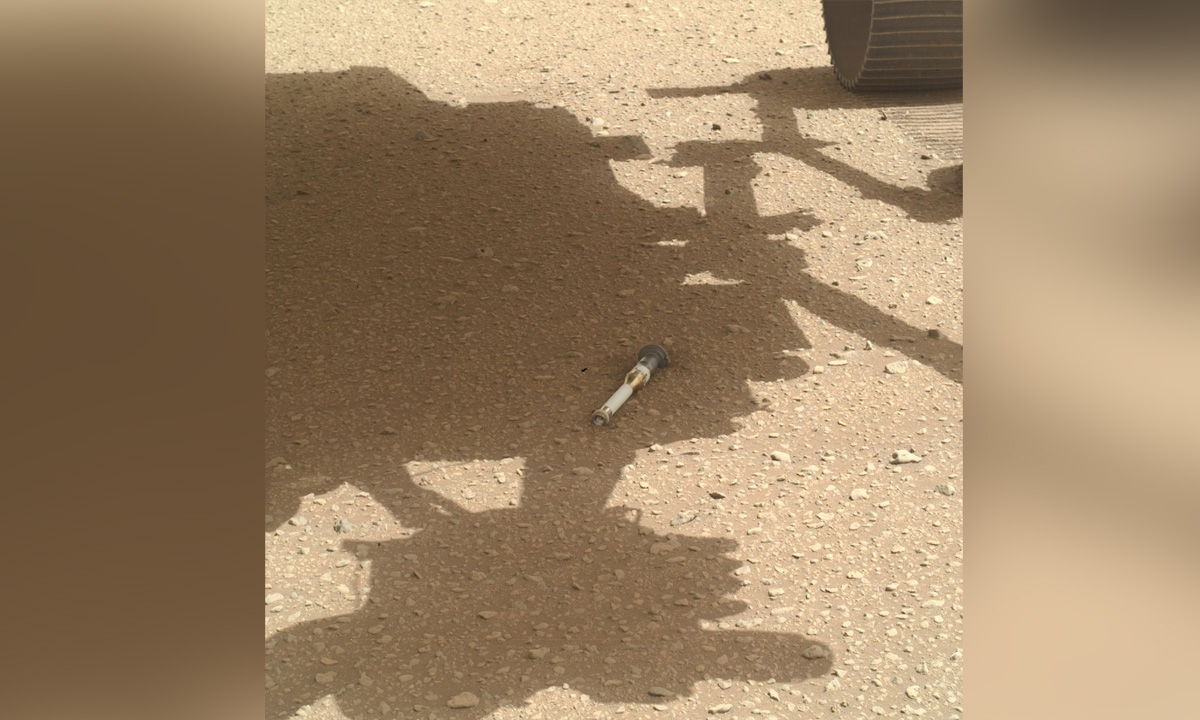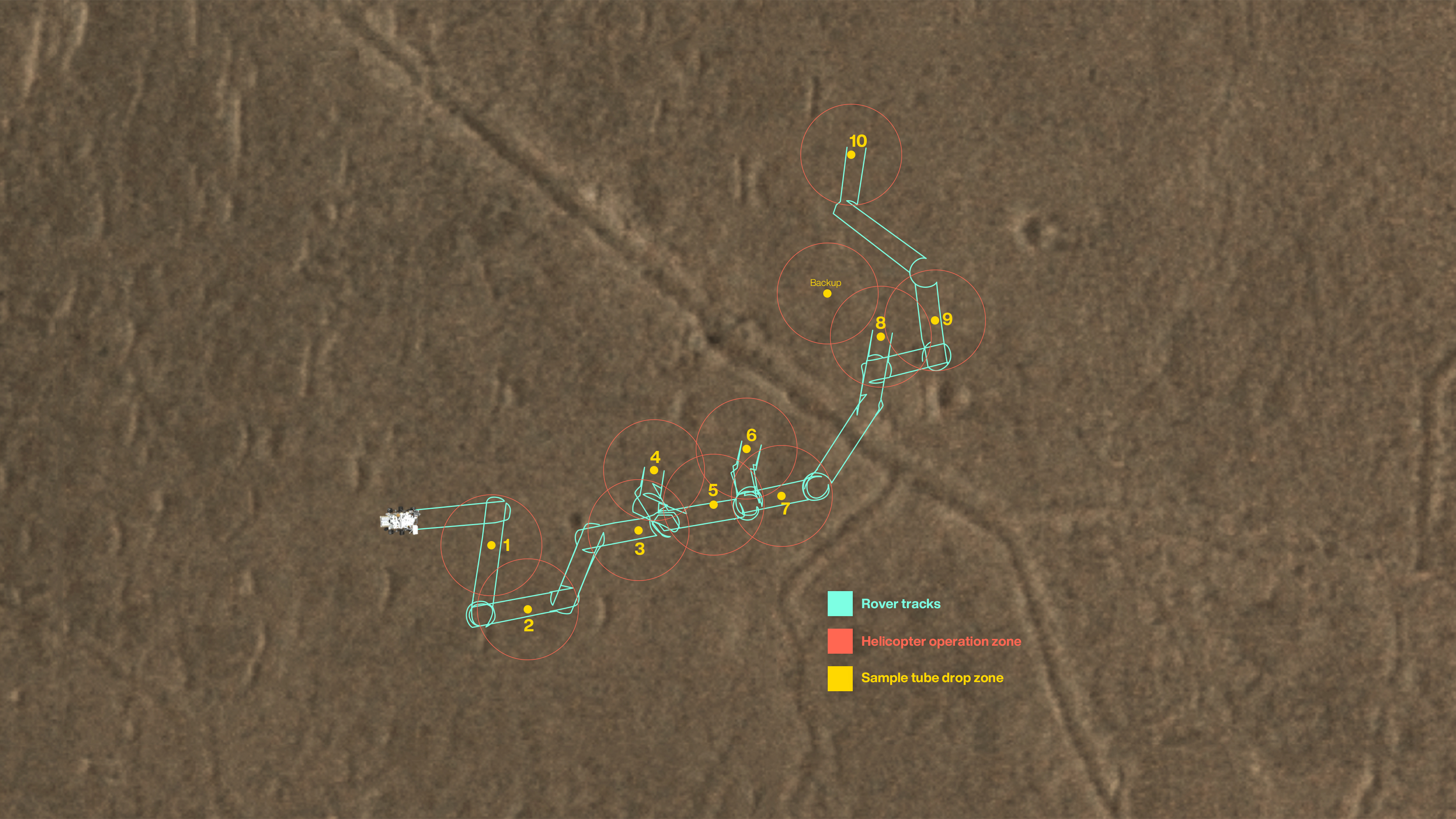Perseverance rover drops 2nd sample tube on Mars, its biggest early Christmas present yet for 2033
The sample tube contained the longest Mars rock sample collected by the Perseverance rover yet.

NASA's Perseverance rover keeps dropping early Christmas presents on Mars.
On Friday (Dec. 23), NASA announced that Perseverance successfully dropped its second rock sample tube on the Martian surface. And while it's not the first Mars sample Perseverance has dropped for a potential future mission to bring to Earth in 2033, it certainly is the biggest.
"My second sample drop is looking good!" NASA's Perseverance rover team wrote in a Twitter update Friday. "This tube holds a piece of sedimentary rock from the edge of the ancient river delta here — the longest rock core I've taken to date."
Related: 12 amazing photos from the Perseverance's 1st year on Mars
The longest rock core collected by Perseverance is a sample called "Mageik," which the rover drilled out of the rock "Amalik" this fall from the "Enchanted Lake" region of ancient delta in its Jezero Crater landing site.
"The tube itself is about the size of a marker, and I measured the rock core sample inside at 7.36 cm (about 2.9 inches)," NASA wrote as Perseverance on Twitter. Perseverance dropped its first sample tube at a nearby spot on Wednesday (Dec. 21).
Perseverance is dropping 10 sealed tubes containing Mars rock samples, which resemble miniature lightsabers from Star Wars, for potential collection by a future Mars Sample Return mission. That mission and an orbiter could launch to Mars by 2028 and return the sample tubes to Earth five years later. If all goes according to plan, Perseverance or two small helicopters will deliver Mars samples to a lander that would then launch them into space so that a waiting orbiter can collect them for the trip back to Earth.
Breaking space news, the latest updates on rocket launches, skywatching events and more!
The samples Perseverance is dropping are backups. The rover collected twin samples at each drill site, storing one inside its body while dropping the other in case a backup is needed. Perseverance is expected to deliver the ones it carries to the waiting lander if the nuclear-powered lasts long enough to reach the Mars Sample Return lander at the end of the decade.
NASA's Perseverance rover landed on Mars in February 2021. It's primary mission will last two years, but NASA hopes the rover could live much longer. Its predecessor, the nuclear-powered Curiosity rover, recently celebrated its 10th anniversary on Mars in August.
Email Tariq Malik at tmalik@space.com or follow him @tariqjmalik. Follow us @Spacedotcom, Facebook and Instagram.

Tariq is the award-winning Editor-in-Chief of Space.com and joined the team in 2001. He covers human spaceflight, as well as skywatching and entertainment. He became Space.com's Editor-in-Chief in 2019. Before joining Space.com, Tariq was a staff reporter for The Los Angeles Times covering education and city beats in La Habra, Fullerton and Huntington Beach. He's a recipient of the 2022 Harry Kolcum Award for excellence in space reporting and the 2025 Space Pioneer Award from the National Space Society. He is an Eagle Scout and Space Camp alum with journalism degrees from the USC and NYU. You can find Tariq at Space.com and as the co-host to the This Week In Space podcast on the TWiT network. To see his latest project, you can follow Tariq on Twitter @tariqjmalik.

